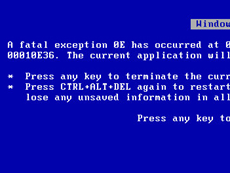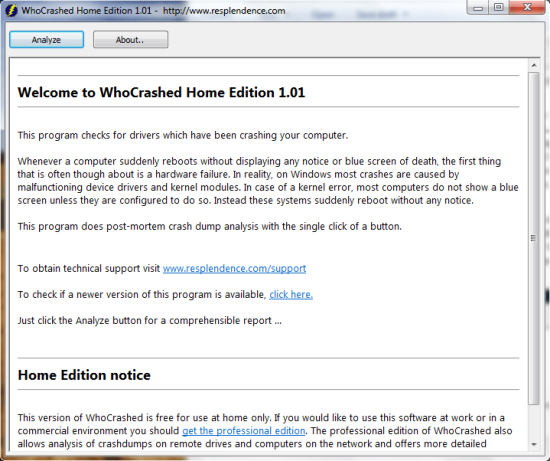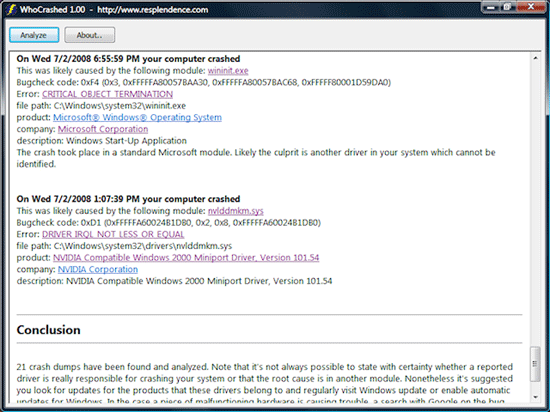Windows machines are often the subject of jokes within the computer geek community, and much of that bad credit is due to cryptic error messages that reveal very little information even to the veterans of this operating system.
Of those type of errors, BSODs (Blue Screen of Death) are the worst and are often caused by poorly written device drivers, kernel extensions or faulty RAM (Random Access Memory). You can't recover to the normal software environment without either a soft or hard reset. Soft resets are usually the case, as the computer will try to automatically reboot or display the error code and require the user to initiate the restart sequence, the infamous "Ctrl-Alt-Delete" or "Press Any Key" prompts.
Many of you probably have encountered this type of error and know that any files that weren't saved at the moment of crash have either lost changes or have been corrupted. Personally, as a writer, I consider this to be one of Windows' greatest flaws. I have lost a lot of work due to this kind of issues and the problems seem to continue in Windows 7, although the frequency appears to be greatly reduced.
WhoCrashed, an application developed by Resplendence Software Projects, aims to demystify the error codes and present you with a likely culprit of the crash. Finding out what caused it can be the first step in eliminating the problem and creating a more stable computing environment. RAM memory, as well as faulty drivers, can be replaced - but your time can't be.
With the help of WhoCrashed, an error code like "0x0BJS00341110B12" can point you to a kernel module like "nvlddmkm.sys" which comes most of the time with vendor information. In this case, as the "˜NV' prefix suggests, an nVidia Miniport driver caused the crash.
Unlike many applications these days, WhoCrashed is presents you with only two buttons and a simple text-oriented interface. The "˜simple is always better' motto holds true in this case. All you have to do is press the "˜Analyze' button and scroll down to the date of the computer crash you want to inspect. Most of the times WhoCrashed will identify the module that failed and allow you to fix the problem.
When a driver caused the crash, which happens 99% of the time, a simple and easy way to fix the problem is to identify it and download the latest version from the manufacturer's website. When a Windows component frequently causes a crashes, the problem will most likely be fixed by running Windows Update.
Overheating can also be responsible for faults in data transfer or processing. If crashes happen while playing intensive 3D games, photo or video editing, check the ventilation system and revert to previous clock speeds if you're overclocking any of the system's parameters. Overheating can permanently damage the hardware, so fixing the problem as fast as possible is recommended.
Pressing and holding the F8 key while the systems boots will bring up a screen with various system recovery options including Safe Mode, which only loads the basic drivers and modules, and a RAM verification tool. Various Linux distributions including Ubuntu, have a similar memory check module (memtest) which is presented at boot-time when the live CD is inserted or by the bootloader in multi-boot environments.
You can download WhoCrashed for free. Installation is achieved via a simple and straightforward wizard. A Pro version aimed at tech support staff is also available for $35. The Pro license removes the "˜home-use-only' restriction and provides more details about the crashes among other features.
At under 1MB, WhoCrashed is a must-have in any geek's virtual toolbox. Check out more posts related to Windows or RadarSync, an application which automatically keeps your drivers and software up-to-date.
Are you annoyed by BSODs or Windows errors? What's the most common one and what did you do to fix it? Let us know in the comments.



